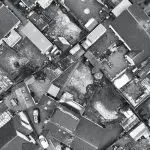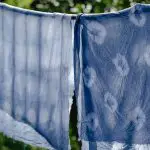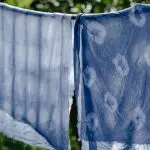Are you considering sewing your own queen size blanket but aren’t sure how much fabric you’ll need? Figuring out the yardage for a queen size blanket can be tricky, but with a little bit of math and some knowledge about the fabric you want to use, you can easily calculate the amount of fabric you’ll need for your project.
When it comes to queen size blankets, there are a few factors to consider, such as the type of fabric you want to use, the thickness of the blanket, and whether or not you plan to add any decorative elements or quilting.
Once you have these factors in mind, you can begin to calculate the amount of fabric you’ll need, which will not only save you from making multiple trips to the fabric store but also ensure that your blanket turns out the way you want it to.
So, let’s dive into the world of queen size blankets and learn how to calculate the yardage you’ll need for your next sewing project.
Table of Contents
Understanding Queen Size Blankets
If you’re wondering how big a queen size blanket is, it typically measures around 90 inches by 90 inches. This makes it the perfect size for a queen size bed, which is usually around 60 inches by 80 inches. However, keep in mind that the exact size of a queen size blanket can vary depending on the brand and material.
When it comes to purchasing a queen size blanket, it’s important to consider the thickness and weight as well. Some blankets are made to be thicker and more plush, while others are thinner and better for warmer weather. Additionally, the material of the blanket can affect its weight and warmth, with options ranging from cotton to wool to synthetic blends.
Overall, a queen size blanket is a versatile and practical addition to any bedroom. With its generous size and variety of materials and thicknesses, you’re sure to find one that fits your personal preferences and needs.
So go ahead and snuggle up with a cozy queen size blanket tonight!
Factors to Consider when Choosing Fabric
When you’re choosing fabric for your cozy bedspread, there are a few things to keep in mind. First, consider the type of material. Cotton is a popular choice for bedding because it’s breathable and comfortable, while polyester is often used for its durability and resistance to wrinkles.
You may also want to think about the weave of the fabric, whether it’s a tight or loose weave, and how it will feel against your skin. Another factor to consider is the weight of the fabric. A heavier fabric will provide more warmth, making it perfect for colder months, while a lighter fabric will be more suitable for warmer weather.
Additionally, you may want to think about the texture of the fabric. A smooth, silky fabric may feel luxurious, but it may also be more slippery and difficult to keep in place on your bed. On the other hand, a textured fabric like flannel may feel cozy and warm, but it may also shed or pill over time.
Lastly, think about the care instructions for the fabric. Some materials may require special care, such as dry cleaning or gentle washing, while others can be machine washed and dried. Consider how much time and effort you’re willing to put into maintaining your bedspread, and choose a fabric that fits your lifestyle.
By keeping these factors in mind, you’ll be able to choose a fabric that not only looks great, but also feels comfortable and meets your practical needs.
Calculating Yardage
When calculating yardage for your project, you need to determine the width of the fabric you plan to use. This will help you determine how much fabric you need to buy in order to achieve the desired size of your finished product.
Additionally, you need to factor in the desired length of your project to ensure that you have enough fabric to complete it.
Determining the Width of the Fabric
To determine the width of your fabric, you’ll need to measure it with a tape measure or ruler. This will help you figure out how many yards you need for your queen size blanket.
Here are some steps you can follow to make sure you get an accurate measurement:
- Lay the fabric out on a flat surface. Make sure it’s free of wrinkles and creases.
- Use the tape measure or ruler to measure the width of the fabric from one edge to the other.
- Write down the measurement in inches or centimeters, depending on which measurement system you prefer.
Once you have the width of your fabric, you can use it to calculate how many yards you need for your queen size blanket.
With these simple steps, you’ll be able to determine the perfect amount of fabric for your project and create a cozy blanket that you’ll enjoy for years to come.
Factoring in the Desired Length
Now that you’ve measured the width of your fabric, it’s time to factor in the desired length for your cozy and comfortable blanket.
To determine the length, you need to consider the size of your bed and how much coverage you want. A queen size bed typically measures 60 inches by 80 inches, so a queen size blanket should be at least 90 inches long to provide ample coverage. However, if you prefer a longer blanket to tuck under your feet, you may want to add a few more inches to the length.
When calculating the required fabric length, don’t forget to account for the seam allowances and hems. If you plan to sew the blanket yourself, you’ll need to add an extra inch or two to the length to accommodate the seams and hemming.
Additionally, keep in mind that different fabrics have different shrinkage rates, so it’s a good idea to prewash and dry the fabric before cutting it to size. By factoring in the desired length and taking into account the sewing details, you’ll be able to determine the exact amount of fabric you need for your queen size blanket.
Adjusting Yardage for Patterned Fabrics
If you want a patterned queen size blanket, you’ll need to adjust the yardage accordingly. This is because patterned fabrics require more yardage than solid fabrics to ensure that the pattern lines up correctly. You’ll need to factor in the pattern repeat, which is the distance between the starting point of the pattern to the next starting point.
To calculate the necessary yardage for a patterned queen size blanket, you’ll need to know the width of the fabric and the pattern repeat. First, determine the desired length of the blanket as discussed in the previous subtopic. Then, add the pattern repeat to the desired length to account for the extra fabric needed for the pattern.
Multiply this number by the width of the fabric to get the total yardage needed.
It’s important to note that some patterns may require even more yardage than calculated due to the complexity of the pattern or the need for directional cutting. Always consult the fabric manufacturer’s recommendations for yardage and cutting instructions to ensure that you have enough fabric for your desired patterned queen size blanket.
Tips for Sewing a Queen Size Blanket
When it comes to sewing a queen size blanket, there are a few important things to keep in mind. Firstly, make sure you choose the right thread for the fabric you’re using – this will ensure your stitches hold up over time.
Secondly, use appropriate needles for your machine and fabric, to prevent breakage or damage.
Lastly, don’t forget to use finishing techniques to give your blanket a polished, professional look.
Choosing the Right Thread
Selecting the proper thread for your queen size blanket can greatly affect its durability and overall look. Here are some tips to help you choose the right thread:
-
Consider the material of the blanket: Whether you’re using cotton, fleece, or another material, you’ll want to choose a thread that is strong enough to hold the fabric together without breaking or fraying. Look for threads that are labeled specifically for the type of material you’re working with.
-
Think about the color: The thread you choose should match the color of your fabric as closely as possible. If you can’t find an exact match, try to choose a thread that is slightly darker than the fabric, rather than lighter. This will help hide any imperfections in your stitching.
-
Don’t skimp on quality: Investing in high-quality thread may cost a bit more, but it’ll be worth it in the long run. Cheap threads are more likely to break or fray, which can ruin the entire blanket. Choose a reputable brand and look for threads labeled as "strong"or "heavy-duty"to ensure your blanket will stand up to regular use and washing.
By following these tips, you can ensure that your queen size blanket isn’t just beautiful, but also durable enough to last for years to come.
Using Appropriate Needles
To make sure your stitches are even and your thread doesn’t break, you’ll need to use the right needles for your project. When it comes to sewing a queen size blanket, you’ll want to choose a needle that is strong enough to handle the thickness of the fabric and batting. A size 90/14 needle is a good option for this type of project.
It’s important to also consider the type of needle you’re using. For example, a universal needle can work for many different types of fabric, but a sharp needle is better for woven fabrics and a ballpoint needle is better for knit fabrics. By using the appropriate needle for your specific fabric, you’ll ensure that your stitches are clean and your fabric isn’t damaged.
Don’t forget to change your needle frequently, as a dull needle can cause uneven stitches and even damage your fabric.
Finishing Techniques
Now that you’ve completed sewing your project, it’s time to learn some finishing techniques that will give your blanket a professional look. Here are three techniques that you can try:
-
Bind the edges: Binding the edges of your blanket adds a decorative touch while also providing durability. Cut strips of fabric, fold them in half lengthwise, and then sew them onto the edges of your blanket.
-
Add a border: If you want to give your blanket a more polished look, consider adding a border. This can be done by sewing a strip of fabric around the edges of the blanket, or by crocheting or knitting a border.
-
Wash and block: After completing your blanket, give it a good wash and then block it to shape. This will help to even out any inconsistencies in the stitches and give your blanket a more finished appearance.
By following these finishing techniques, you can take your queen size blanket to the next level and create a professional-looking piece that you’ll be proud to display or gift to someone special.
Alternatives to Sewing a Queen Size Blanket
Looking for an alternative to sewing a queen size blanket? You’re in luck!
Two great options include no-sew fleece blankets and tied quilts. These options are perfect for those who don’t have a lot of sewing experience or who want to complete a project quickly.
No-Sew Fleece Blankets
Creating a cozy and warm atmosphere in your home is easy with no-sew fleece blankets. They’re perfect for snuggling up on the couch, and not only are they soft and comfortable, but they’re also incredibly easy to make.
All you need is some fleece fabric, scissors, and a ruler to create a blanket that’s perfect for your queen size bed. To make a no-sew fleece blanket, start by choosing two pieces of fleece in your desired colors or patterns.
Lay them on top of each other and cut them to the same size. Then, cut strips along the edges of both pieces of fabric, making sure they’re the same size and evenly spaced. Tie the strips together in knots, securing the two pieces of fabric together.
Repeat this process around all four sides of the blanket, and you’ll have a beautiful and cozy no-sew fleece blanket that’s perfect for snuggling up on a chilly night.
Tied Quilts
Get ready to snuggle up with a cozy tied quilt made just for you! Tied quilts are a great DIY project for those who want to make their own blanket without having to sew. Here are some tips and tricks to help you make the perfect tied quilt:
-
Choose your fabric wisely: Make sure to select fabrics that are soft and cozy, such as flannel or fleece. You’ll also want to choose fabrics that complement each other in color and pattern.
-
Cut your fabric: Cut your fabric into squares that are all the same size. The size of the squares will depend on how big you want your quilt to be, but a good starting point is 6-8 inches.
-
Tie your quilt: Once you have your squares cut, stack them on top of each other and tie them together. To tie your quilt, simply knot the corners of each square together. Be sure to tie them tightly so that your quilt doesn’t fall apart.
-
Add a border: To give your quilt a finished look, add a border of fabric around the edges. You can sew this on or tie it on like the rest of the squares.
-
Enjoy your cozy creation: Once your tied quilt is complete, snuggle up and enjoy your cozy creation! These make great gifts for friends and family too.
- What Does Organza Feel Like? - April 23, 2024
- What Is the Difference Between Organza and Organza Silk? - April 23, 2024
- What Are the Pros and Cons of Organza Fabric? - April 23, 2024







